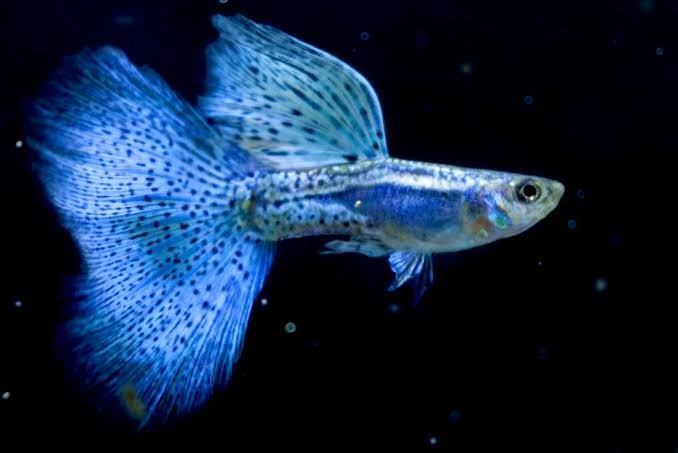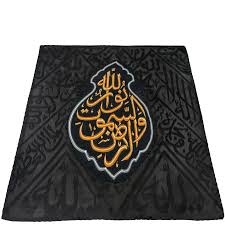The Blue Grass Guppy is a captivating freshwater fish that has earned its place among the most sought-after guppy varieties in the aquarist world. With its shimmering blue hues and intricately patterned tails, this guppy not only adds aesthetic value to your tank but also brings life and movement that’s hard to ignore. In this article, we’ll explore the origin, care, breeding, and ideal tank conditions for this beautiful fish, and why it’s a favorite among both beginner and experienced fish keepers.
What is a Blue Grass Guppy?
The Blue Grass Guppy is a selectively bred guppy strain known for its stunning, grass-like tail patterns in shades of metallic blue, turquoise, and aqua. Males are especially eye-catching, flaunting larger and more vibrant tails compared to the more subdued females. These guppies are often recognized for their energetic behavior and peaceful temperament, making them ideal for community tanks.
To learn more about the Blue Grass Guppy’s unique features and care tips, check out this Blue Grass Guppy guide.
Appearance and Characteristics
-
Coloration: Predominantly blue, often with iridescent highlights and dark speckles.
-
Tail Pattern: “Grass” refers to the fine, dotted pattern spread like blades of grass across the caudal fin.
-
Size: Typically, adult males grow up to 1.5 inches, while females can reach 2.5 inches.
-
Lifespan: With proper care, they live up to 2-3 years.
Ideal Tank Conditions
To keep your Blue Grass Guppy healthy and vibrant, here are the key tank parameters to maintain:
-
Tank Size: Minimum 10 gallons for a small group.
-
Temperature: 72°F to 82°F (22°C to 28°C).
-
pH Level: 6.8 to 7.8.
-
Hardness: 8–12 dGH.
-
Filtration: Gentle filtration with regular water changes.
-
Lighting: Moderate lighting to enhance their color and support plant growth.
Live plants, such as guppy grass or java moss, provide excellent cover and enrich the guppies’ environment.
Diet and Nutrition
Blue Grass Guppies thrive on a varied diet. Feed them a mix of:
-
High-quality flake food
-
Frozen or live brine shrimp
-
Daphnia
-
Bloodworms
-
Micro pellets
A diverse diet not only keeps them healthy but also helps intensify their natural colors.
Breeding Blue Grass Guppies
Like other guppies, the Blue Grass Guppy is a livebearer, meaning it gives birth to free-swimming fry. Breeding is typically easy:
-
Keep a ratio of one male to two or three females to reduce stress.
-
Provide plenty of hiding spots for fry using plants or breeding boxes.
-
Fry should be separated from adults to avoid predation.
Compatibility with Other Fish
Blue Grass Guppies are peaceful and do well in community tanks. Ideal tank mates include:
-
Neon Tetras
-
Corydoras Catfish
-
Mollies
-
Platies
-
Other peaceful guppies
Avoid aggressive or fin-nipping species like barbs or cichlids.
Why Choose a Blue Grass Guppy?
-
Stunning Appearance: Their intricate tail design and electric blue coloration stand out.
-
Easy to Care For: Ideal for beginners and hobbyists alike.
-
Active Swimmers: Always on the move, they bring life to any tank.
-
Prolific Breeders: Great for those interested in breeding guppies.
Learn More About Guppy Life
For more in-depth articles on guppy care, breeding, varieties, and more, visit Guppy Life, your trusted resource for everything related to guppy fish.
Distinctive Features
The Blue Grass Guppy is easily recognized by its:
-
Color Spectrum: Shimmering shades of deep to sky blue, often with metallic or violet undertones.
-
Caudal Fin Design: Fine, dot-like markings that resemble tall grass, forming a lace-like tail pattern.
-
Dimorphism: Males are smaller and flashier; females are larger and more rounded with subtler colors.
-
Activity Level: Constant swimmers, bringing motion and energy to your tank.
Tank Setup for Blue Grass Guppies
Creating the right environment is essential for the health and coloration of your Blue Grass Guppies. Here’s what you’ll need:
Tank Size and Layout
-
Minimum Tank Size: 10 gallons for a trio (1 male, 2 females).
-
Substrate: Fine gravel or sand.
-
Aquascaping: Use live plants like guppy grass, hornwort, and water wisteria. These offer hiding spots and help mimic their natural environment.
-
Decor: Include rocks and driftwood to enhance aesthetics and provide additional shelter.
Water Parameters
-
Temperature: 72°F to 82°F (22°C to 28°C).
-
pH Level: 6.8 to 7.8 — slightly alkaline is preferred.
-
Hardness: Moderate, around 8–12 dGH.
-
Filtration: Use sponge filters or low-flow filters to avoid strong currents.
-
Lighting: Moderate lighting helps showcase their colors without stressing them.
Regular water changes (25–30% weekly) are crucial to maintain water quality and prevent ammonia buildup.
Feeding and Nutrition
A balanced diet enhances the health, growth, and color intensity of your Blue Grass Guppies.
Recommended Diet:
-
Staple Foods: High-quality guppy flakes or micro pellets.
-
Protein Treats: Frozen or live foods like brine shrimp, bloodworms, and daphnia.
-
Vegetable Matter: Boiled spinach or blanched zucchini as an occasional treat.
Feed them small portions 2–3 times a day. Remove any uneaten food within 5 minutes to avoid water contamination.
Breeding Blue Grass Guppies
Blue Grass Guppies breed easily in a home aquarium, and breeding them can be a rewarding hobby.
Breeding Tips:
-
Breeding Ratio: 1 male for every 2–3 females to reduce stress on the females.
-
Gestation Period: Around 21–30 days.
-
Fry Protection: Use dense floating plants or breeding boxes to protect the fry, as adults may eat them.
-
Fry Care: Feed newly born fry with infusoria, crushed flakes, or baby brine shrimp.
As they grow, selectively breed the healthiest, most colorful guppies to maintain the Blue Grass lineage.
Common Health Issues
While generally hardy, Blue Grass Guppies can suffer from common freshwater diseases if not properly cared for.
-
Ich (White Spot Disease): Caused by temperature fluctuations or stress.
-
Fin Rot: Often due to poor water quality.
-
Internal Parasites: Signs include weight loss and stringy feces.
Prevention:
-
Maintain stable water parameters.
-
Quarantine new fish for at least two weeks.
-
Avoid overfeeding and overcrowding.
Tank Mates for Blue Grass Guppies
Due to their peaceful nature, Blue Grass Guppies coexist well with other small, non-aggressive species:
-
Compatible Tank Mates:
-
Neon Tetras
-
Harlequin Rasboras
-
Mollies
-
Otocinclus Catfish
-
Cherry Shrimp
-
Avoid fin-nipping fish like tiger barbs or any large, predatory species.
Conclusion
The Blue Grass Guppy is more than just a pretty fish — it’s a symbol of tranquility, beauty, and the joys of aquarium keeping. With the right care, this guppy variety will thrive and become a centerpiece of your aquatic community. Whether you’re starting your guppy journey or adding to an existing collection, the Blue Grass Guppy is a smart and stunning choice.
- Blue Grass Guppy: A Mesmerizing Addition to Your Aquarium
- The Blue Grass Guppy is a captivating freshwater fish that has earned its place among the most sought-after guppy varieties in the aquarist world. With its shimmering blue hues and intricately patterned tails, this guppy not only adds aesthetic value to your tank but also brings life and movement that’s hard to ignore. In this article, we’ll explore the origin, care, breeding, and ideal tank conditions for this beautiful fish, and why it’s a favorite among both beginner and experienced fish keepers.
- Grass Guppy
Related posts:
 Best Topical Finasteride & Minoxidil Spray for Hair Regrowth
Best Topical Finasteride & Minoxidil Spray for Hair Regrowth
 What Are the Key Considerations Before Getting Filler Injections?
What Are the Key Considerations Before Getting Filler Injections?
 Dr. Kami Hoss Gives Out the Truth About Brushing & Flossing-Protecting Your Teeth
Dr. Kami Hoss Gives Out the Truth About Brushing & Flossing-Protecting Your Teeth
 Can Atrial Fibrillation Be Cured? Latest Research & Insights
Can Atrial Fibrillation Be Cured? Latest Research & Insights
 How to Know If You Need to See a Gastro Doctor for Stomach Pain
How to Know If You Need to See a Gastro Doctor for Stomach Pain
 How Massage Therapy Can Improve Your Health: A Guide for Queens Residents
How Massage Therapy Can Improve Your Health: A Guide for Queens Residents
 A Complete Guide on the Pricing of the Composite Bonding in London
A Complete Guide on the Pricing of the Composite Bonding in London
 Your brief and useful guide to removable orthodontic appliances
Your brief and useful guide to removable orthodontic appliances






